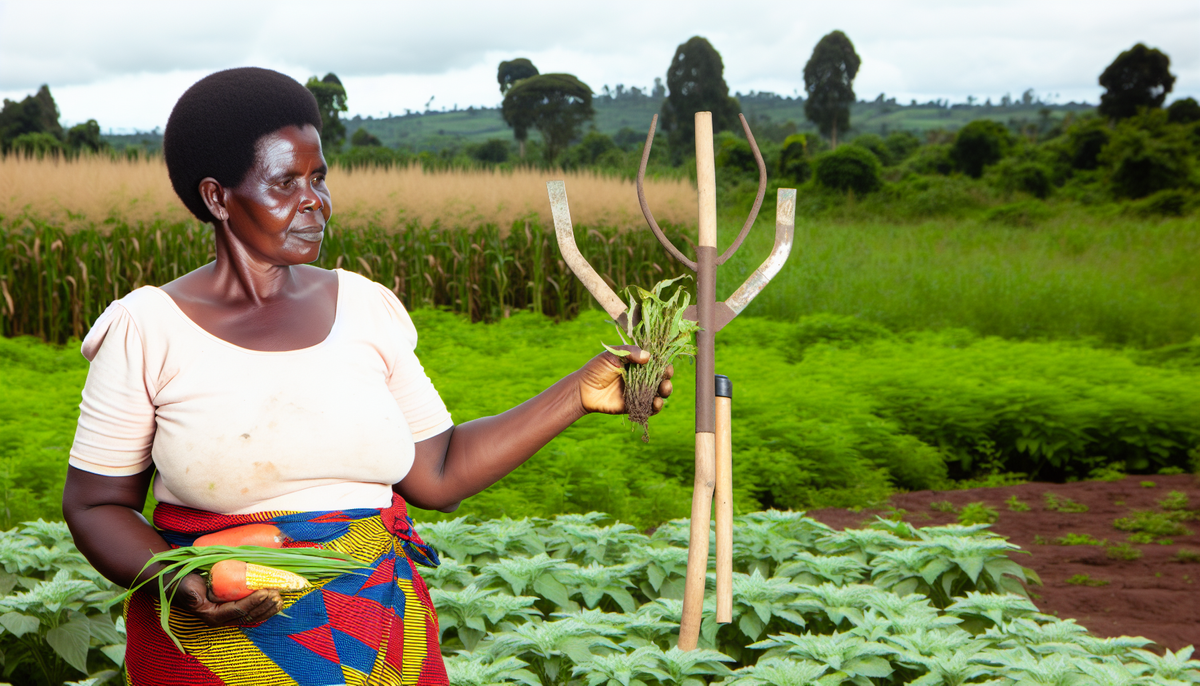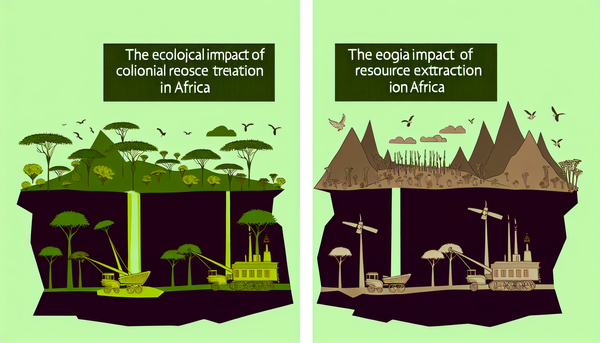African Innovations in Agriculture and Food Preservation

Exploring Indigenous Techniques for Crop Cultivation
Indigenous techniques for crop cultivation have been developed over centuries, rooted in extensive knowledge of local ecosystems and biodiversity. These practices are not only sustainable but also resilient to climate changes, making them increasingly relevant today. One notable technique is intercropping, where multiple plant species are grown together. This approach enhances soil fertility, reduces pests, and boosts overall yields—a perfect balance of competition and cooperation.
Another vital method is traditional agroforestry, which integrates trees with crops. This system promotes biodiversity, conserves water, and protects crops from extreme weather. Indigenous farmers often rely on organic fertilizers, such as animal manure and compost, which enrich the soil without the harmful effects of chemical inputs.
Additionally, practices like crop rotation are employed to maintain soil health. By varying the types of crops planted over seasons, farmers can disrupt pest cycles and prevent nutrient depletion. Many of these techniques are tailored to specific communities and climates, highlighting the importance of local knowledge.
As the world faces challenges such as food security and climate change, revisiting and adapting these indigenous agricultural methods can offer invaluable solutions that respect both nature and cultural heritage.
Advancements in Sustainable Irrigation Methods
Sustainable irrigation methods are crucial for maximizing water efficiency in agriculture, especially in regions facing water scarcity. Recent advancements have transformed traditional practices into innovative systems that conserve resources while enhancing crop yield. One of the most noteworthy techniques is drip irrigation, which delivers precise amounts of water directly to plant roots. This method significantly reduces water waste and minimizes evaporation, enabling farmers to achieve optimal growth with less water.
Another advancement is the use of smart irrigation technology, which incorporates data analytics and sensors. These systems monitor soil moisture levels and weather conditions, allowing for real-time adjustments to irrigation schedules. By applying water only when necessary, farmers can reduce consumption and improve crop resilience against drought.
Rainwater harvesting is also gaining traction, allowing farmers to capture and store precipitation for later use. This method not only conserves water but also helps in managing flood risks. Additionally, the integration of weather forecasting tools enables better planning and resource management.
Overall, these sustainable irrigation advancements reflect a shift toward more efficient agricultural practices. By embracing these innovations, farmers can secure their livelihoods while contributing to the broader goal of environmental sustainability, ensuring food security for future generations.
Impact of Biotechnology on Seed Development
Biotechnology has revolutionized seed development, leading to significant advancements that enhance agricultural productivity and sustainability. Through genetic engineering, scientists can modify crops at the molecular level, introducing traits that improve yield, resilience, and nutritional value. One of the most notable impacts is the creation of genetically modified (GM) seeds that are resistant to pests and diseases. This has drastically reduced the need for chemical pesticides, promoting a more environmentally friendly approach to farming.
Another crucial benefit of biotechnology is the development of drought-resistant varieties. As climate change intensifies, these seeds enable farmers to maintain productivity under adverse conditions, reducing the risk of crop failure and ensuring food security. Biotechnology also plays a pivotal role in biofortification, where essential nutrients are integrated into staple crops, addressing nutritional deficiencies in populations reliant on limited diets.
Moreover, rapid advancements in techniques like CRISPR gene editing allow for more precise modifications, reducing the time and cost associated with traditional breeding methods. This not only accelerates innovation in seed development but also opens doors to addressing emerging agricultural challenges.
In summary, biotechnology has fundamentally transformed seed development, providing tools that empower farmers, enhance food security, and promote sustainable practices in agriculture.
Solar-Powered Solutions for Food Storage
Solar-powered solutions for food storage represent a sustainable and innovative approach to preserving perishable goods, particularly in regions with limited access to electricity. As food waste remains a significant global issue, these technologies offer opportunities to enhance food security by extending the shelf life of fresh produce.
One of the most prominent solutions is the solar cold storage unit, which utilizes solar panels to power refrigeration systems. These units can maintain optimal temperatures for fruits, vegetables, and dairy products, slowing spoilage and allowing farmers to sell their products over longer periods. By reducing reliance on fossil fuels, these systems not only lower operational costs but also minimize the carbon footprint associated with food preservation.
Additionally, solar dryers are gaining traction as a means of preserving food. These devices use sunlight to dehydrate fruits, vegetables, and meats, retaining vital nutrients while preventing microbial growth. This method is particularly advantageous in rural areas where access to traditional drying facilities is limited.
As more communities adopt solar-powered food storage solutions, they can achieve greater resilience against food insecurity and reduce post-harvest losses. Overall, these innovations not only enhance food preservation methods but also promote sustainable practices in agriculture and contribute to a greener future.
Utilization of Natural Pesticides and Their Benefits
The utilization of natural pesticides has gained recognition as a sustainable alternative to synthetic chemicals in agriculture. Derived from natural sources—such as plants, minerals, and microorganisms—these pest control agents offer various benefits that align with environmentally friendly farming practices.
One primary advantage of natural pesticides is their reduced toxicity to non-target organisms, including beneficial insects, pollinators, and humans. Unlike conventional pesticides that can cause long-term harm to ecosystems, natural alternatives tend to break down more quickly, minimizing environmental persistence and contamination of soil and water resources.
Furthermore, natural pesticides often contribute to healthier soils by fostering a diverse microbiome. For instance, plant-derived insect repellents can stimulate the growth of beneficial microorganisms that enhance soil fertility and crop resilience. Additionally, these products typically promote integrated pest management (IPM) practices, which can help farmers maintain balanced ecosystems while effectively controlling pests.
Natural pesticides also appeal to increasingly eco-conscious consumers who demand chemical-free produce. By adopting these methods, farmers can improve marketability and profitability while reducing harmful agricultural practices.
In summary, the utilization of natural pesticides not only safeguards crops from pests but also promotes sustainable agriculture, protects ecosystems, and supports consumer health, creating a win-win scenario for both farmers and the environment.
Innovative Post-Harvest Loss Reduction Strategies
Post-harvest losses (PHL) represent a significant challenge in global food security, with up to one-third of food produced for human consumption wasted each year. Innovative strategies are essential to mitigate these losses and ensure that more food reaches consumers.
One effective strategy is the development of improved storage technologies, such as hermetic storage bags and silos. These airtight containers protect grains and other perishables from pests and moisture, significantly extending shelf life without the need for chemical preservatives.
Another promising approach involves the use of mobile applications to streamline supply chains. By connecting farmers directly with consumers and retailers, these platforms can reduce intermediaries, ensuring that fresh produce reaches markets more efficiently, minimizing spoilage during transportation.
Additionally, training programs that educate farmers on best practices in post-harvest handling are invaluable. Increasing awareness about proper drying, sorting, and packing techniques can substantially lower spoilage rates.
Moreover, the integration of solar-powered refrigeration systems allows rural farmers to store perishable goods longer, preventing losses due to spoilage.
In summary, innovative post-harvest loss reduction strategies encompass technology, education, and improved logistics, collectively aiming to enhance food security and make agricultural practices more sustainable. By implementing these strategies, we can significantly reduce food waste and increase the availability of nutritious food for all.
Integration of ICT Tools in Farm Management
The integration of Information and Communication Technology (ICT) tools in farm management has revolutionized agricultural practices, driving efficiency and productivity across the sector. These technologies empower farmers with data-driven insights, enhancing decision-making processes related to crop management, resource allocation, and market access.
One of the most impactful ICT tools is precision agriculture software, which utilizes satellite imagery and sensor data to monitor crop health and soil conditions. Farmers can analyze this data to optimize irrigation, fertilization, and pest management, ultimately maximizing yield while minimizing resource waste.
Mobile applications also play a significant role in enhancing farm management. Farmers can access real-time weather forecasts, market prices, and best practice guides, allowing them to make informed decisions about planting and harvesting schedules. Additionally, these apps facilitate communication among farmers, agricultural experts, and suppliers, fostering collaboration and knowledge sharing within farming communities.
Furthermore, farm management systems (FMS) help streamline operations by providing tools for inventory management, financial tracking, and labor management. By automating routine tasks, farmers can focus on strategic planning and improve overall productivity.
In conclusion, the integration of ICT tools in farm management not only enhances operational efficiency but also strengthens sustainability efforts, paving the way for a modern, resilient agricultural landscape.



